While people are wary of financial crisis and genetically modified foods, some animals must beware of the troubles falling from the sky.
These are birds of prey, which destroy without mercy and without remorse. They are so strong that they are rarely taken down by other animals. And if being strong is not enough, they are also very big! They kill in different ways and have varied food preferences.
Read on if you want to find out which birds are masters of the sky!
On this page:
- 1 Cinereous vulture – a large vulture in all aspects
- 2 Himalayan griffon vulture – always flying high up in the sky
- 3 Bearded vulture – with unusual cravings
- 4 Andean condor – the most famous big flying bird
- 5 Californian condor – the tall carnivore
- 6 Lappet-faced vulture – as ugly as they come
- 7 Harpy eagle – a bird that rises from the legend
- 8 Steller’s sea eagle – rules above waters
- 9 White-tailed eagle – the largest European predator
- 10 Philippine eagle – a mesmerizing face
- 11 Martial eagle – fighting bird
- 12 Crowned eagle – flying leopard
- 13 Golden eagle – the most wide spread eagle
- 14 Gyrfalcon – the largest falcon
- 15 Peregrine falcon – the fastest bird
- 16 Blakiston’s fish owl – the largest owl
- 17 Eurasian eagle-owl – the great owl
- 18 Dangerous flying creatures from past times
Cinereous vulture – a large vulture in all aspects
One of the largest birds of prey is the cinereous vulture (Aegypius monachus). In fact, taking into account several criteria, many experts say it’s the largest bird of prey seen these days. (Bird comparison is a very difficult task because there are many factors that must be taken into account, and expert’s opinions often differ.)
We are dealing with a big bird, about 98-120 centimeters long. It weighs 6 to 14 kilograms 1)”Vultures: Their Evolution, Ecology and Conservation” by Michael O’Neal Campbell, book published by CRC Press in 2015 – about the weight of a skinny child. You’re not afraid of a toddler… are you? (If you’ve started to stock up on pride, better think again.)
You might say it’s not a big bird. But wait till it expands its wings! The wingspan is somewhere between 2.5 and 3.1 meters 2)”Vultures: Their Evolution, Ecology and Conservation” by Michael O’Neal Campbell, book published by CRC Press in 2015 . Imagine yourself laying down on a picnic blanket, your legs stretched all the way out, and a vulture shadow covers your entire body, no matter how long you are. It’s pretty scary seeing it near you.
But don’t you worry too much. Vultures feed mainly on corpses. Just make sure to look alive from time to time.
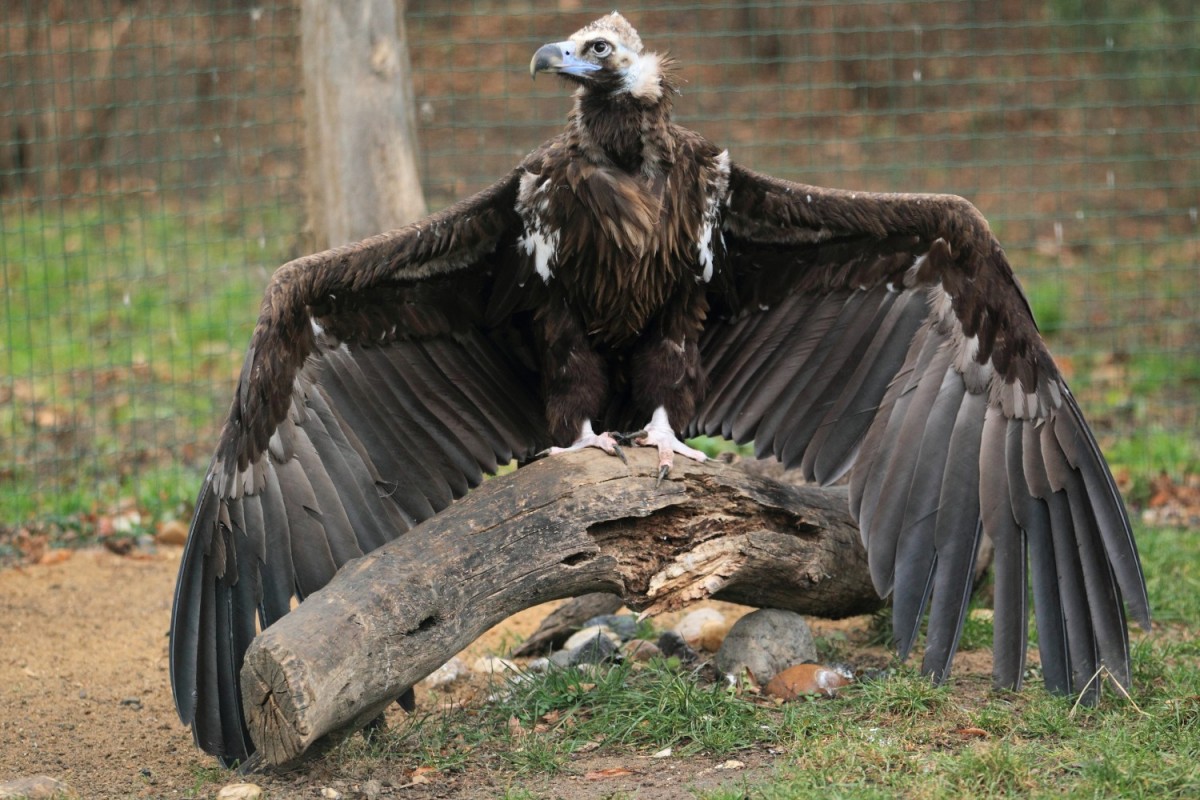
In Latin, monachus means monk. It was named this way because it has black feathers.
It lives in Eurasia, but it’s almost extinct. In many countries, especially in Europe, it has already disappeared 3)”Globally Threatened Birds in Europe” – book published by European Council in 1996.
Himalayan griffon vulture – always flying high up in the sky
Another vulture competing toe to toe with the cinereous vulture is the Himalayan griffon vulture (Gyps himalayensis). According to some experts, it can even be bigger. The fact is, it has no competition in Himalaya, which is where it usually lives. The Himalayan griffon vulture rarely drops below 2,000 meters altitude, but it has been seen at around 9,000 meters 4)”Tibet” by Michael Buckley, book published by Bradt Travel Guides in 2012. This bird is always high – literally.
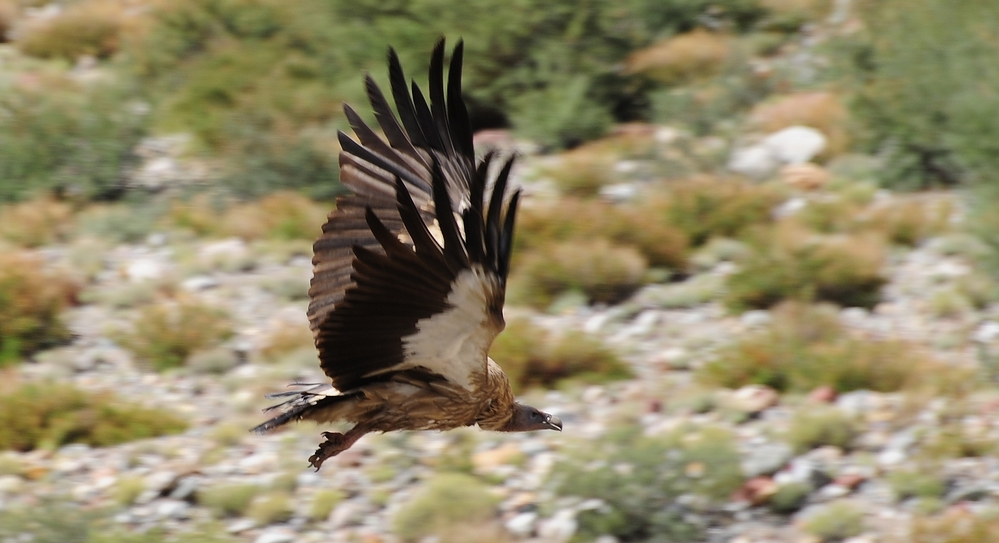
The Himalayan vulture’s wingspan is the same as the cinereous vulture: usually between 2.6 and 2.9 meters, with a maximum of 3.06 meters 5)”Raptors of the World” by James Ferguson-Lees and David A. Christie, book published by Princeton University Press in 2006. But the bird’s length can reach one and a half meters, especially due to the fact that their neck stretches. (This bird knows how to properly stretch.)
Bearded vulture – with unusual cravings
Lammergeier or bearded vulture (Gypaetus barbatus) is one of the largest, but least known, birds of prey in the world.
With a length of 100-120 cm and a weight of 4.5 kilograms 6)”Lammergeier (Gypaetus barbatus)” in Wildscreen Arkive, it has an impressive wingspan of over three meters.
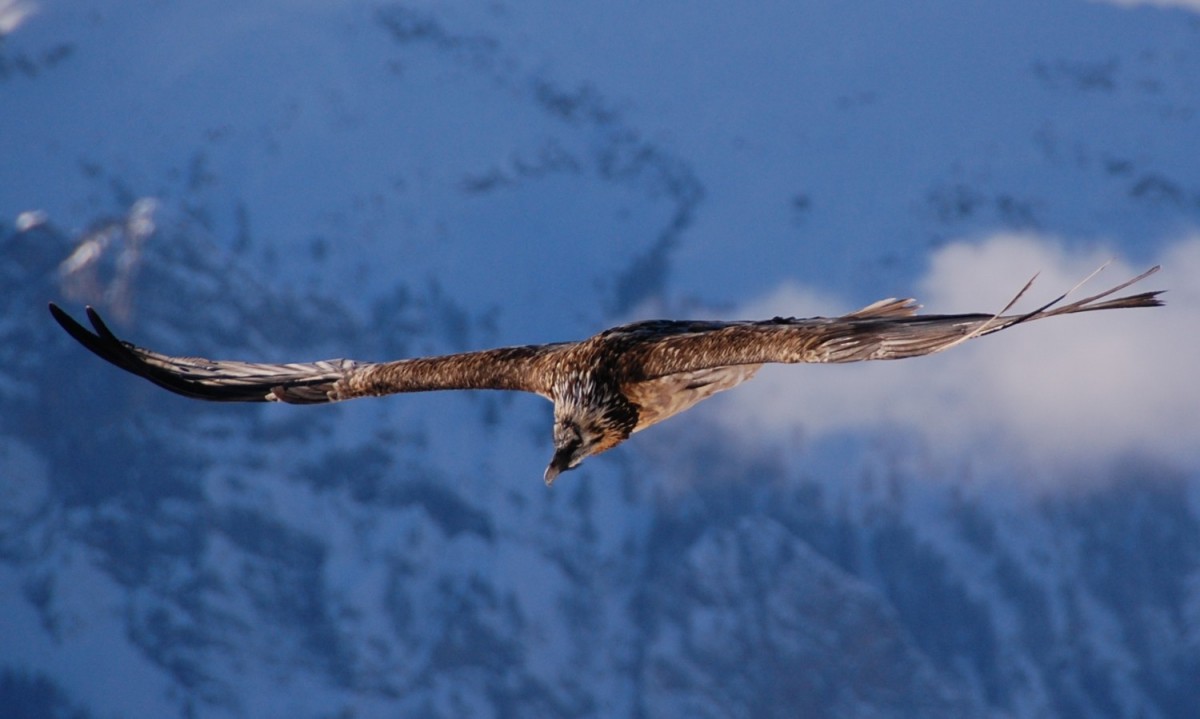
Vultures, in general, eat cold meat from corpses, but bearded vultures don’t really prefer corpses. They have a bizarre preference, at least for birds: bone marrow. And they are not stupid, because the bone marrow doesn’t spoil for a long time. It is also very nutritious.
They can eat small bones entirely, because their stomach acids aid in the digestion of them. But how do they break down big bones? They don’t use a hammer, of course! They lift the bones in the air and drop them from grand heights, sometimes several times, hitting them on rocks or stones to make them crumble 7)”Lammergeier (Gypaetus barbatus)” in Wildscreen Arkive.
They do the same thing with the poor turtles that cross their paths, they bash them against the ground until their shells break.

As once expressed by Valerius Maximus, ancient dramatist Aeschylus was ironically killed by a turtle. Of course, the turtle didn’t charge at his neck or attack him ferociously. The turtle was thrown at his head from the sky by a bearded vulture. Perhaps the vulture confused his bald head for a rock!?
But can you believe this?! In Iran, this bird is said to bring good luck and happiness (at least that’s what people say). But not the kind of “good luck” that Aeschylus had. It is said that if you are completely covered by its shadow, you become a badass. Well, if you ever get covered by such a bird shadow, you’ll become lucky after you escape!
Have you heard of Shimon Perez, former president of Israel? In fact, his last name was Perski. In 1945, he was doing some work in the Negev desert and found the nest of some bearded vultures. Over there they call them “peres”. He liked them so much that he changed his name 8)”Flight of Fancy” by Stephen Marche, article published by The New Republic in June 13, 2008.
Andean condor – the most famous big flying bird
Generally, vultures don’t have the greatest of reputations. I do not know how, but condors – being their relatives – have a romantic image. People have dedicated songs to them and dreamed of their flight.
Is this because they aren’t exactly vultures? They are part of the so-called New World vultures 9)”New World vulture” in Wikipedia. For some time, scientists have been undecided about how to exactly classify condors. Many of them have even said that condors are some kind of… stork! Which often excludes them from discussions about predator birds. However, common sense does not disappoint us: new research, based on DNA analysis, shows that condors are birds of prey, related to other birds of prey, even if they are on a different evolutionary branch 10)”Whole-genome analyses resolve early branches in the tree of life of modern birds” – study conducted by Erich D. Jarvis, Siavash Mirarab, Andre J. Aberer, Bo Li, Peter Houde, Cai Li, Simon Y.W. Ho, Brant C. Faircloth, Benoit Nabholz, Jason T. Howard, Alexander Suh, Claudia C. Weber, Rute R. da Fonseca, Jianwen Li, Fang Zhang, Hui Li, Long Zhou, Nitish Narula, Liang Liu, Ganesh Ganapathy, Bastien Boussau, Md. Shamsuzzoha Bayzid, Volodymyr Zavidovych, Sankar Subramanian, Toni Gabaldón, Salvador Capella-Gutiérrez, Jaime Huerta-Cepas, Bhanu Rekepalli, Kasper Munch, Mikkel Schierup, Bent Lindow, Wesley C. Warren, David Ray, Richard E. Green, Michael W. Bruford, Xiangjiang Zhan, Andrew Dixon, Shengbin Li, Ning Li, Yinhua Huang, Elizabeth P. Derryberry, Mads Frost Bertelsen, Frederick H. Sheldon, Robb T. Brumfield, Claudio V. Mello, Peter V. Lovell, Morgan Wirthlin, Maria Paula Cruz Schneider, Francisco Prosdocimi, José Alfredo Samaniego, Amhed Missael Vargas Velazquez, Alonzo Alfaro-Núñez, Paula F. Campos, Bent Petersen, Thomas Sicheritz-Ponten, An Pas, Tom Bailey, Paul Scofield, Michael Bunce, David M. Lambert, Qi Zhou, Polina Perelman, Amy C. Driskell, Beth Shapiro, Zijun Xiong, Yongli Zeng, Shiping Liu, Zhenyu Li, Binghang Liu, Kui Wu, Jin Xiao, Xiong Yinqi, Qiuemei Zheng, Yong Zhang, Huanming Yang, Jian Wang, Linnea Smeds, Frank E. Rheindt, Michael Braun, Jon Fjeldsa, Ludovic Orlando, F. Keith Barker, Knud Andreas Jønsson, Warren Johnson, Klaus-Peter Koepfli, Stephen O’Brien, David Haussler, Oliver A. Ryder, Carsten Rahbek, Eske Willerslev, Gary R. Graves, Travis C. Glenn, John McCormack, Dave Burt, Hans Ellegren, Per Alström, Scott V. Edwards, Alexandros Stamatakis, David P. Mindell, Joel Cracraft, Edward L. Braun, Tandy Warnow, Wang Jun, M. Thomas P. Gilbert and Guojie Zhang, published in Science on December 12, 2014.
The most well-known is the Andean condor (Vultur gryphus). It lives in the Andes, as the name implies.
Andean condors are known for their huge wings, spanning about 3 meters (10 feet). There is a document from 1861 that refers to a condor in Peru that was said to have a wingspan of 14 feet and 2 inches (432 centimeters) – but it’s hard to believe that it truly existed. The largest credible measurement indicates 320 centimeters, but only when you stretch out their wings completely, not in their natural flight position 11)”Raptors of the World” by James Ferguson-Lees and David A. Christie, book published by Princeton University Press in 2006. However, taking many opinions into consideration, the largest specimens of Andean condors do have the largest wingspan for a bird of prey. Andean condors weigh 11-15 kilograms, so they may be considerably bigger than the cinereous vulture. It really depends on who you’re asking.
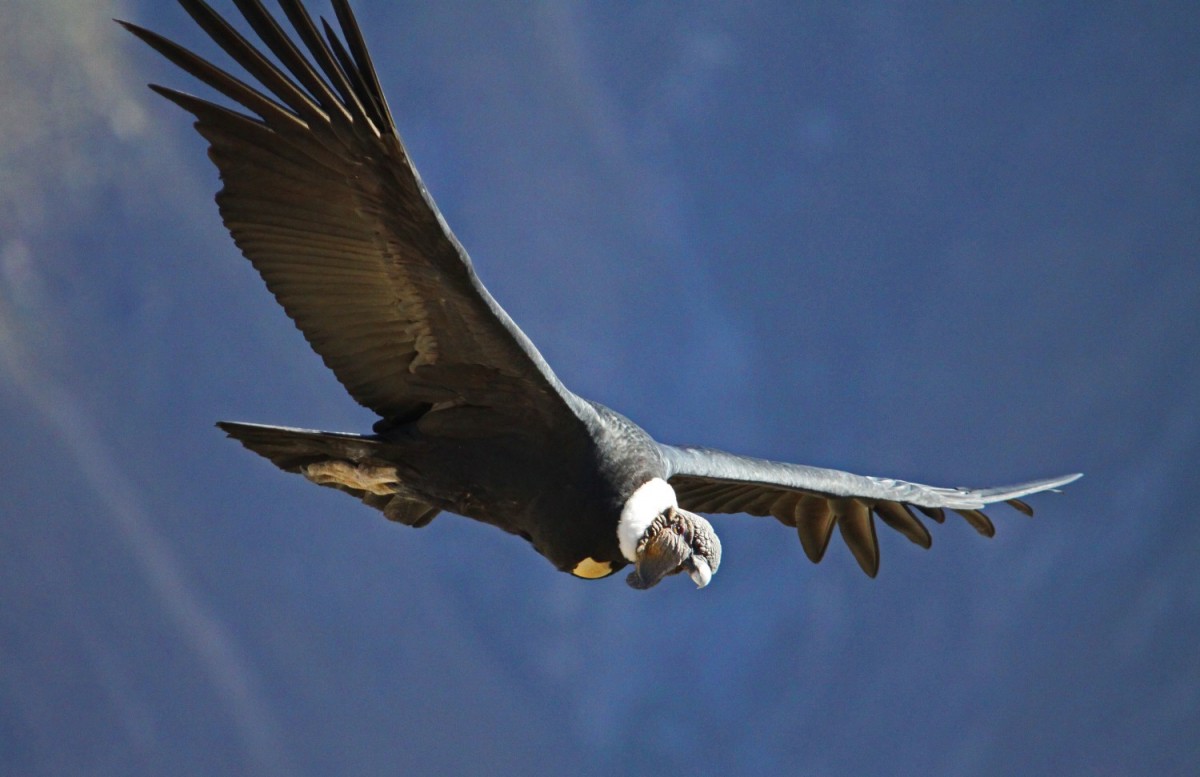
Andean condors fly up to 200 kilometers per day to find and devour corpses. But if they get hungry, they set aside their preferences and hunt any animal they can find.
Californian condor – the tall carnivore
Californian condor (Gymnogyps californianus) is the North American version of the Andean condor. It is less famous, but not any less esteemed.
Their wings are smaller, measuring about 3 meters – but still wide enough to have the largest wings in North America.
From their beak to the tip of their tail, they measure somewhere between 109 and 140 centimeters (43-55 inches). That makes them the longest birds of prey 12)”Vultures: Their Evolution, Ecology and Conservation” by Michael O’Neal Campbell, book published by CRC Press in 2015.
Californian condors do not eat regularly. They can go weeks without eating anything. But when they do, they gorge their selves. They can gain 10% of their weight after a meal like this. (Imagine yourself eating 7 kilos of meat at one meal!) This is not a very healthy lifestyle. Maybe that’s why they are facing extinction.
Lappet-faced vulture – as ugly as they come
Another big vulture that isn’t well-known is the lappet-faced vulture (Torgos tracheliotus), living in the semi-arid and desert lands of Africa. If a bird ever returned from hell, this must be it.
It has a wingspan of about 2.5-2.9 meters (8.2 to 9.5 feet) and a length up to 115 centimeters (45 inches).
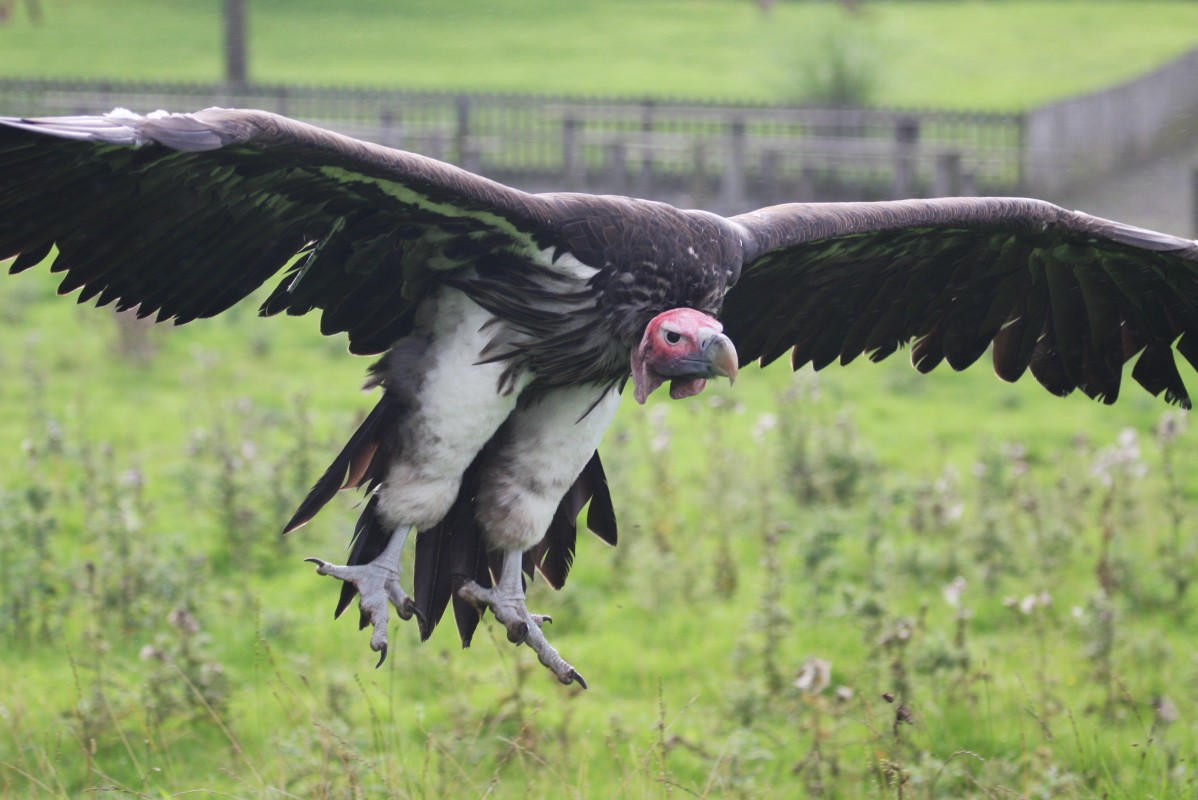
It has a strong beak, 10 centimeters long – the largest of any bird of prey. Not being a picky eater, it feeds on corpses and does not hesitate to attack any animal that is not as strong as it is, varying from flamingos to antelopes or gazelles. But it is also an unscrupulous thief: stealing eggs and chicks from other birds.
It is a very aggressive vulture. If it wants a corpse, it doesn’t matter if another animal had it first, it will usher all away and become the sole owner of the new-found corpse!
Harpy eagle – a bird that rises from the legend
Vultures, which feed mostly on corpses, are not very attractive. But if we are talking about genuine air hunters, one of the biggest birds of prey who keeps an eye on everything that moves is the harpy eagle (Harpia harpyja).
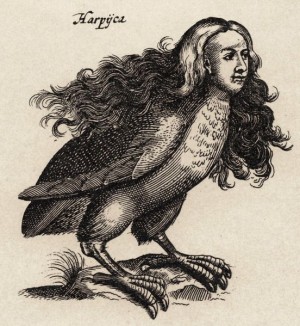
In mythology, harpy was a monstrous bird with a female face. Initially, harpies were seen as being beautiful, but over time they became increasingly ugly in their representations. Until they became a metaphor for the obnoxious woman with whom you have to deal with.
Nowadays, female harpies reach 1 meter in length (3.3 feet) with a wingspan of 2.3 meters (7.5 feet) and weighing 9kg (20lb) 13)”Eagles” by Rebecca L. Grambo, book published by Voyageur Press in 2003. They are gluttonous, so they can get even fatter (usually after marriage).
Males are slightly shorter but more thinner – almost half the size of a female. It’s clear to see who wears the pants in this family.
Harpy eagles have huge claws. Their claws can grow to be the size of a grizzly bear’s claws. They hunt sloth (not slothful men, but mammals called sloth), birds, monkeys, rodents, and iguanas.
Harpy eagles have sharp sight. When it wants to aim better while in flight, it tilts its head down. Every man for himself!
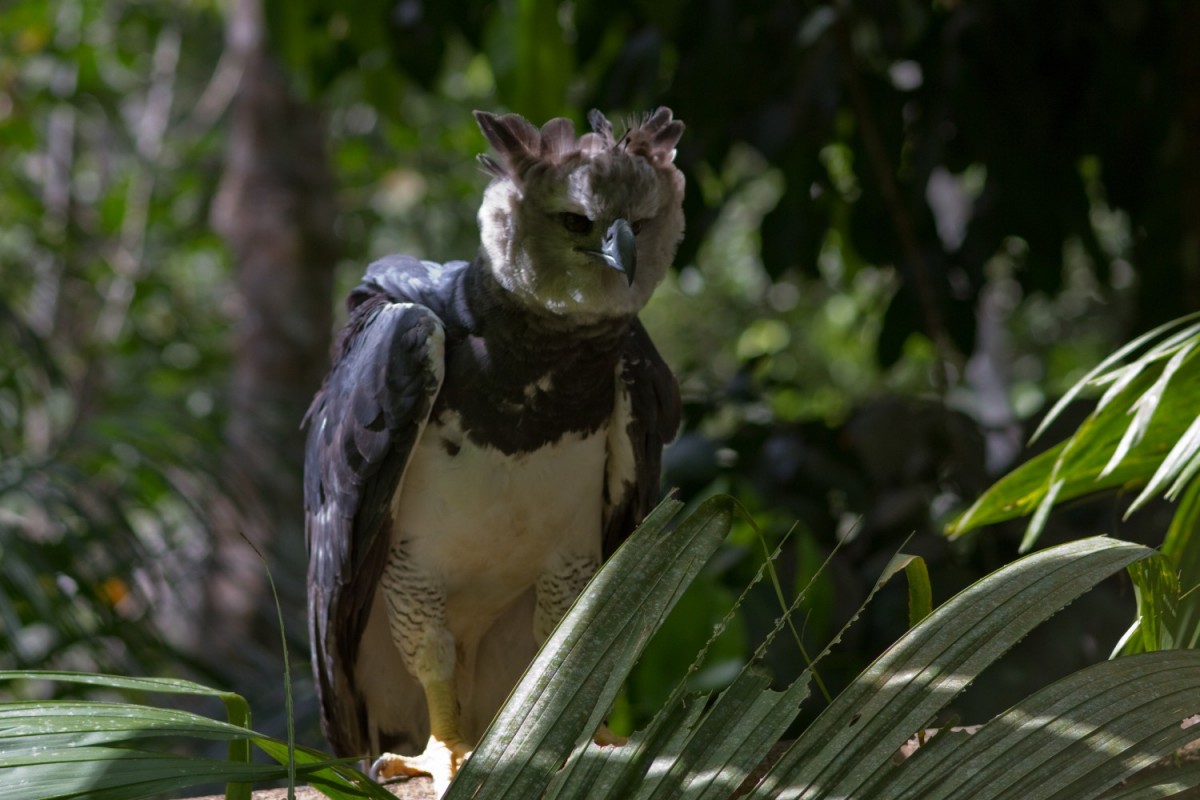
A bird this size needs a proper nest. A harpy eagle’s nest has a diameter of 1.5 meters (5 feet). Do you realize just how smart they are if they can build such thing?!
It lives in southern Brazil, southeastern Mexico, and northern Argentina 14)”Eagles (Endangered!)” by Karen Haywood, book published by Benchmark Books in 2008. It’s the national bird of Panama 15)”Panama” by Sarah Woods, book published by Bradt Travel Guides in 2009.
Steller’s sea eagle – rules above waters
Steller’s sea eagle (Haliaeetus pelagicus) is actually a large eagle, competing with the harpy eagle for the title of world’s most heaviest eagle.
Also in this case, females are larger than males. The dames have nine kilograms and the fellas 6 16)”Steller’s sea eagle (Haliaeetus pelagicus)” in Wildscreen Arkive. But some experts argue that this bird may reach 12.7 kg, which would be a record among eagles.
It has a wingspan that sometimes reaches 2.5 meters with an estimated average of about 2.13 to 2.2 meters 17)”Raptors of the World” by James Ferguson-Lees şi David A. Christie, book published by Princeton University Press in 2006. Given the averages of various measurements, some believe it to be the largest eagle.
These birds are the masters of the sky in eastern Russia. They migrate to the Japanese islands of Hokkaido and Kuril during the winter. Sometimes arriving in the Korean Peninsula.
Their yellow beak is large and arched, perfect for catching and devouring salmon and other fish. If needed, they also feast on sea lion and seal corpses 18)”Steller’s sea eagle (Haliaeetus pelagicus)” in Wildscreen Arkive.
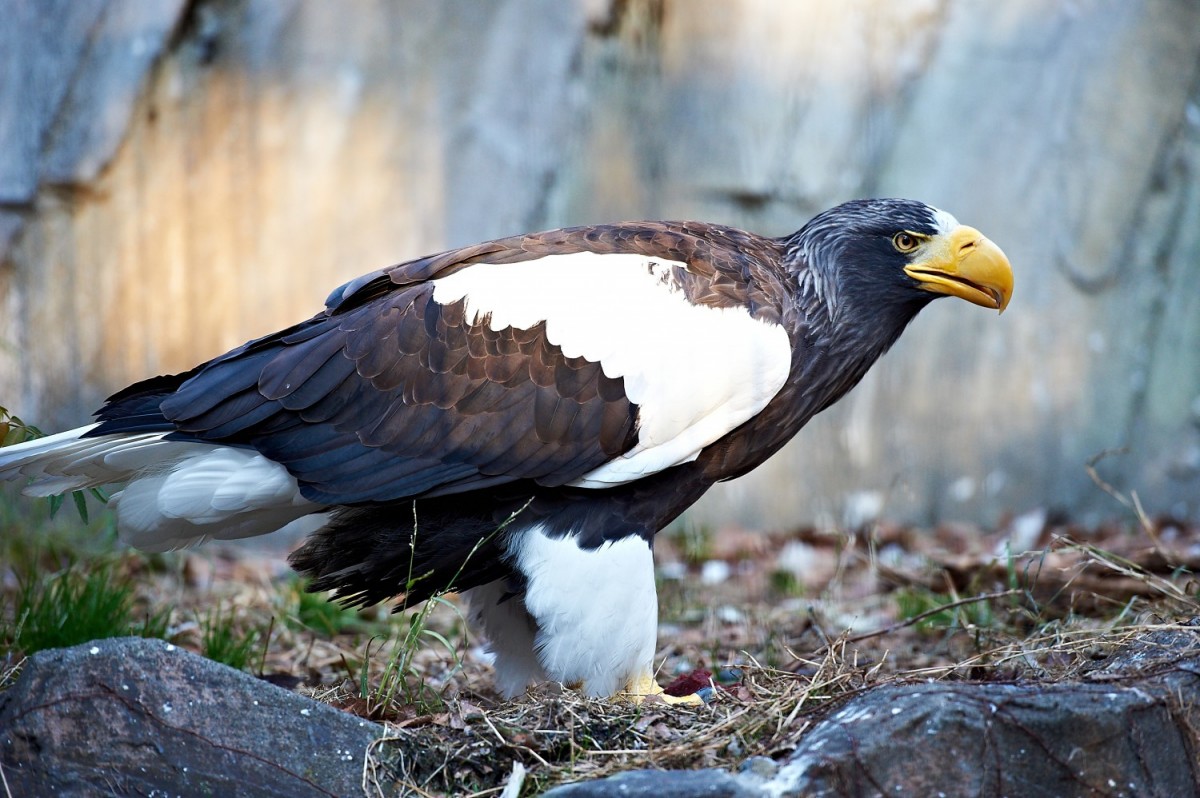
You’re thinking what I’m thinking, right? These birds of prey seem to work pretty hard for their food. That may be so, but they love getting everything ready-made, otherwise they wouldn’t steal each other’s prey. The phenomenon occurs with other species in the animal world and is called kleptoparasitism.
Sea eagles are considered to be a vulnerable species, which is why the islands of Japan where they migrate to for winter are monitored.
White-tailed eagle – the largest European predator
White-tailed eagle (Haliaeetus albicilla) is the largest bird of prey in Europe 19)”White-tailed eagle (Haliaeetus albicilla)” in Wildscreen Arkive. It lives mostly in Russia, Norway, Denmark, Germany, Poland, southwestern Greenland, and Sweden.

Wingspan can reach 2.4 meters (8 feet) 20)”White-tailed eagle (Haliaeetus albicilla)” in Wildscreen Arkive. Only slightly below the maximum wingspan possible for Steller’s sea eagle. But if we take a look at the average of the white tailed eagle, it is around 2.18 meters (7.2 feet). As for its competitor, specialists can’t agree on an average; so it depends on who you ask if you want to know which is bigger.
Philippine eagle – a mesmerizing face
A competitor in size to the harpy eagle is the Philippine eagle (Pithecophaga jefferyi). The fact is that this bird of prey is the longest eagle: grows up to 1.12 meters (3.7 feet). With a wingspan of 2 meters.
Although it is really creepy and powerful, it only weighs about 6.5 kilograms 21)”Eagles” by Rebecca L. Grambo, book published by Voyageur Press in 2003.
It feeds on live animals, killing them itself. It was originally named the monkey-eating eagle, because the natives told stories about them eating only monkeys. But it turns out that they have a varied menu: from bats to deers. It even carries large prey to its nest. Does it have a fridge up there?
You have probably already imagined what this beast looks like. You may be wondering if it shoots fire from its beak. I’d better show you it! Its looks are killing me.
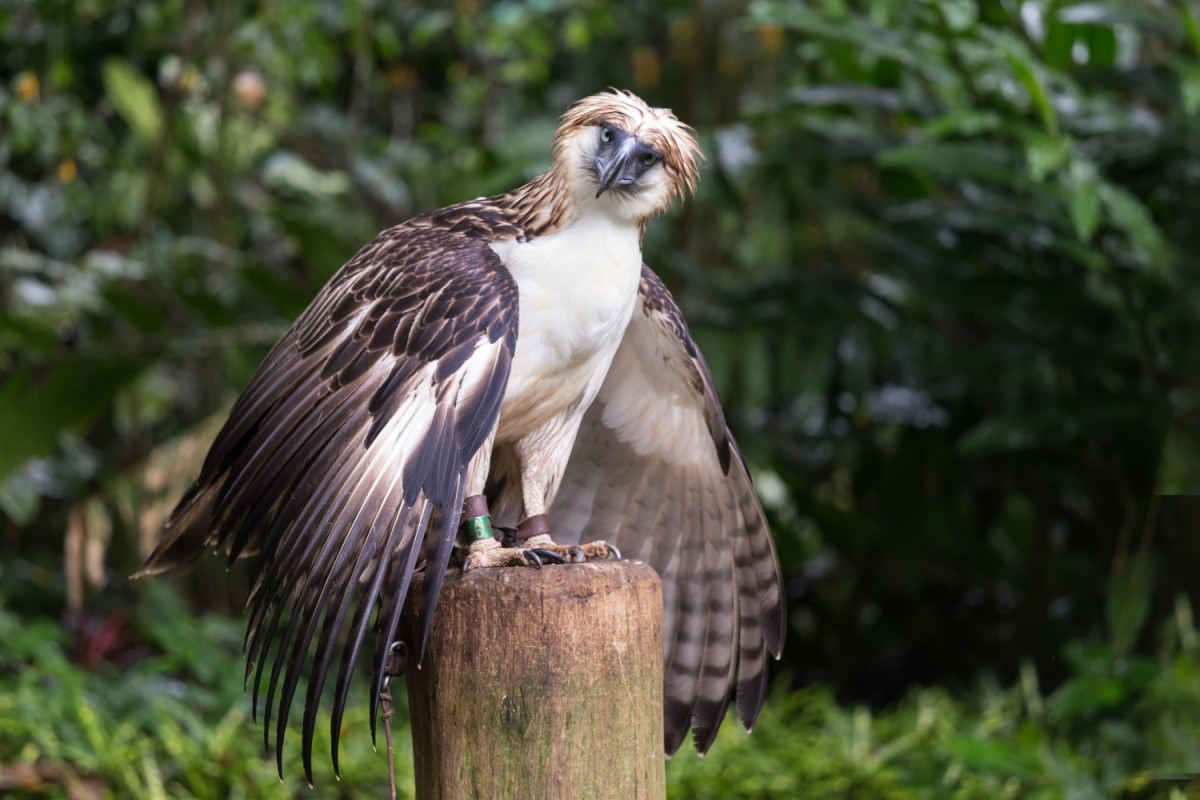
In the Philippines, it’s considered the national bird. Filipinos say it is the King of birds. Unfortunately, it is endangered. (Sort of the way today’s monarchies are.)
Martial eagle – fighting bird
Martial eagle (Polemaetus bellicosus) is the biggest eagle in Africa.
Wingspan is among the largest of all eagles: up to 260 centimeters 22)”Southern African Wildlife” by Mike Unwin, book published by Bradt Travel Guides in 2011. Since it has a very short tail, relative to its wings, the martial eagle is slightly smaller in length – between 78 and 96 centimeters. It weighs only 3.1 to 6.2 kg, which doesn’t makes it a considerable candidate for the title of the largest eagle.
Males are smaller than females. They are monogamous and faithful – they do not change their lifelong partners. (Do you think males would dare let their eyes fly upon other females?!)
Martial eagle can see at least 3 times better than a human. And it is incredibly powerful. If it sets its eyes upon any living creature in the savannah, it can already be considered eaten – even if we’re talking about poisonous snakes.
It is at war with lions, because it’s not reluctant to kidnaping a lion cub when hungry. But when it gets caught by lions, the only thing that remains are feathers. (Talk about who’s eating who!)
It is at war with the people, because it attacks lambs. And you don’t mess with humans! That’s how it managed to become threatened by extinction.
Crowned eagle – flying leopard
Another “angry bird” of the same region is crowned eagle (Stephanoaetus coronatus). Only the two species split their territories, while martial eagle prefers the savannah, the crowned eagle prefers wooded areas. When they meet, they make a huge mess!
Crowned eagle has a length between 80 and 99 centimeters and its wingspan is between 1.6 and 2.1 meters 23)”Field Guide to the Birds of Ghana” by Nik Borrow and Ron Demey, book published by Christopher Helm Publishing Company in 2010. It only weighs 3.4 kg, but attacks animals even 10 times heavier!
Locals call it the air leopard. The comparison is not at all coincidental, the two being equally ferocious creatures. The crowned eagle is so strong that it can use its claws to crush the skull of a monkey – its favorite food. It can even take out small antelopes.
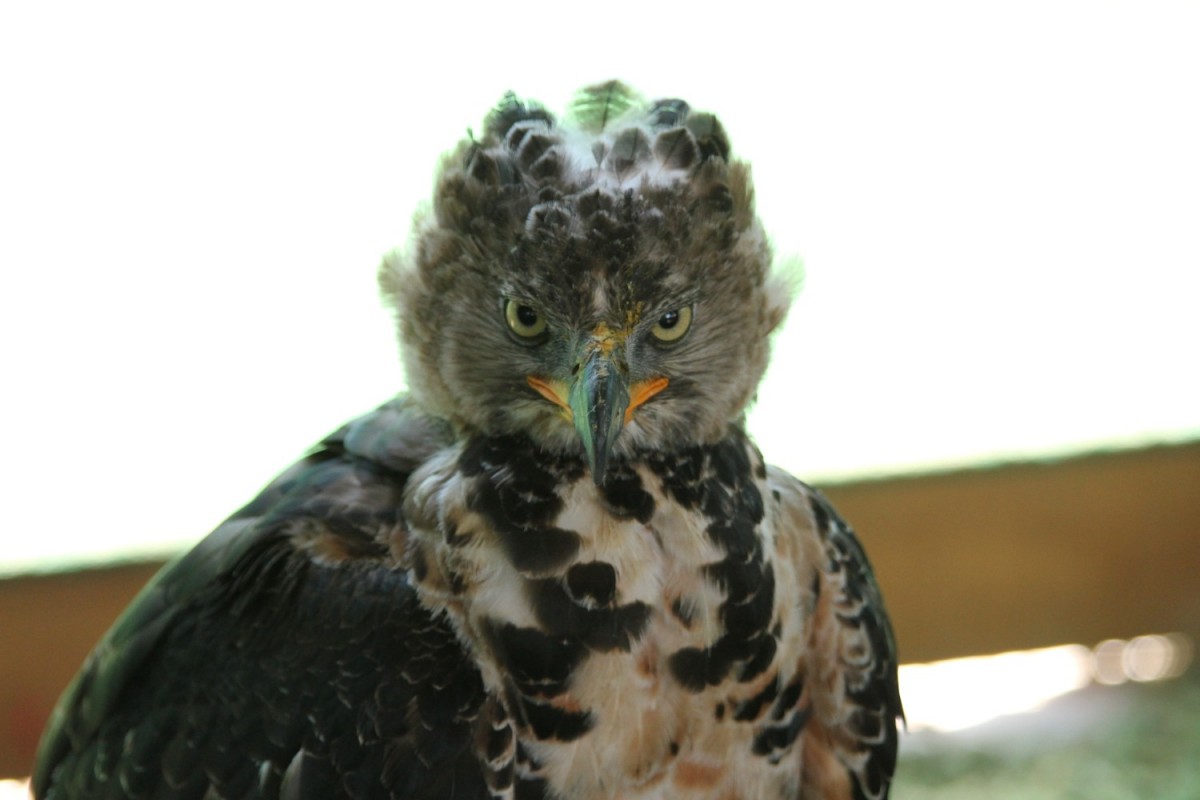
Golden eagle – the most wide spread eagle
Golden eagle (Aquila chrysaetos) is one of the best known birds of prey in the world. It lives in North Africa, Eurasia, and North America.
Its length varies between 73 and 86 centimeters, with a wingspan between 185 and 220 centimeters 24)”Golden Eagle” în All About Birds. It might not be the biggest eagle, but certainly competes for the title of most ferocious one.

It hunts small birds, rabbits, goats, sheep, and foxes. But it is very bold and has no reservations to attack larger animals such as reindeer and deer.
A golden eagle can take down a grown man. In some campfire stories, golden eagles snatched children, and their remains were found in nests. But let’s skip over the horror stories, because they remain just that, stories 25)”Do Eagles Really Snatch Babies?” by Forrest Wickman, article published in Slate on December 19, 2012. (Don’t get me started on the movie that horrified the world in 2012 – the author admitted that it was faked.)
One thing is certain: the golden eagle thinks it’s bigger and stronger than any other birds of prey, since it sometimes attacks and kills them mercilessly. The aggressiveness of these birds have not gone unnoticed, hunting nomads in Kazakhstan have started training them to kill wolves.
Golden eagles have an incredibly fast flight. They can even reach speeds of 128 km/h in leveled flight, making them the fastest bird in flight. And their dive is a terror – up to 320 km/h 26)”Aquila chrysaetos” in Animal Diversity Web!
Gyrfalcon – the largest falcon
Even if it is small compared to vultures and eagles, gyrfalcon (Falco rusticolus) is the largest of the falcons.
Gyrfalcon is a daylight bird of prey. It is between 50 and 63 centimeters (20 to 25 inches) 27)”Gyrfalcon” in The Peregrine Fund. Its outstretched wings measure between 1.2 and 1.3 meters (4 to 4 ½ feet).
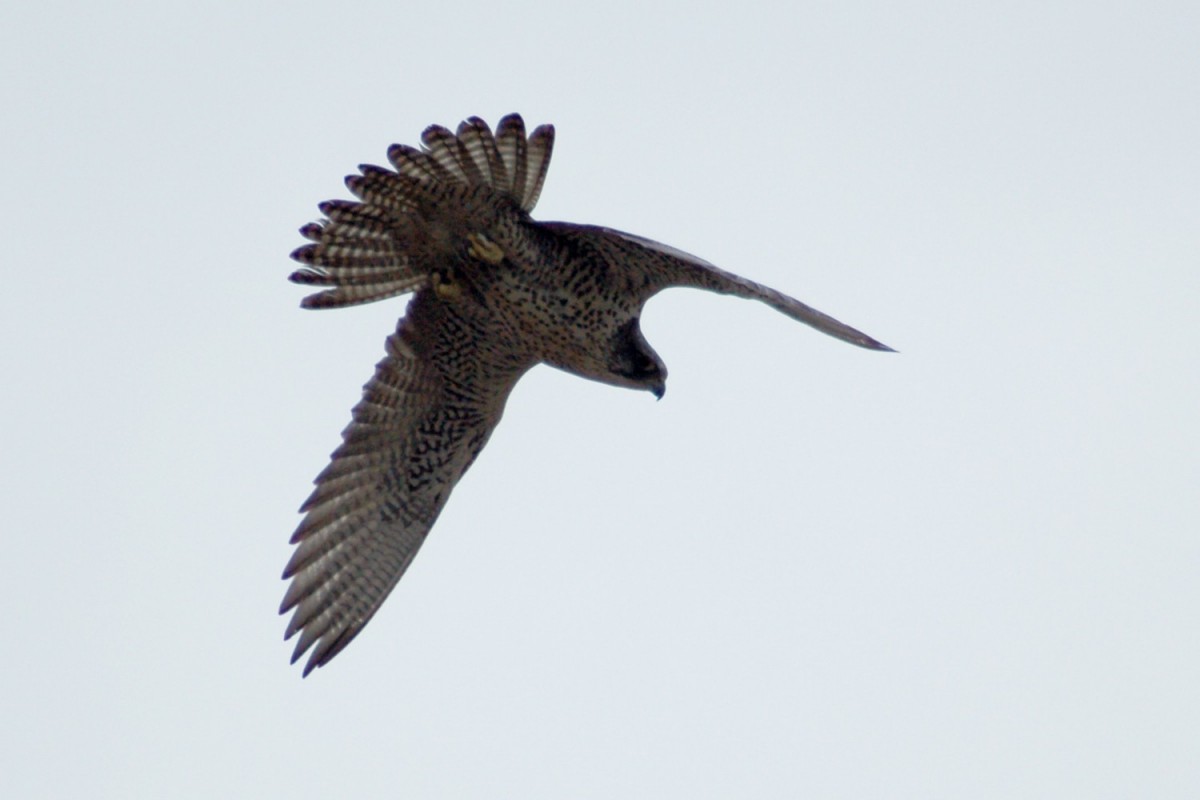
It lives in the arctic regions of subarctic Iceland, Greenland, North America, Asia, and Europe. In general, they hunt water birds, marmots, squirrels, rabbits, and other land animals 28)”Gyrfalcon” in The Peregrine Fund.
Peregrine falcon – the fastest bird
Another impressive hawk is the peregrine falcon (Falco peregrinus), which has a length between 34 and 58 centimeters (13 to 23 inches), and its wingspan measures between 74 and 120 centimeters (29 to 47 inches). But these are not its strengths.
The peregrine falcon excels at speed. If you thought the golden eagle was fast, the peregrine falcon can beat it. In horizontal flight it can reach speeds of 105-110 km/h, which is slightly less than the golden eagle. But in dive, this hawk is unimaginable. Its speed was measured at 389 km/h 29)”Falling with the Falcon” by Tom Harpole, article published in Air & Space Magazine in March, 2005! The prey doesn’t even realize that it is in danger. It not only is currently the fastest bird, but it is also the fastest creature. Besides this hawk, the famous cheetah barely moves at 120 km/h 30)”Animal Records” by Mark Carwardine, book published by Sterling in 2008. You could say it’s a Formula 1 car!
Blakiston’s fish owl – the largest owl
Buhuhu! Blakistoni’s fish owl (Bubo blakistoni) is the largest owl in the world – having a wingspan of about 2 meters 31)”Owls of the World” by Claus König), Friedhelm Weick and Jan-Hendrik Becking, book publlished by Yale University Press in 2009!
It’s called Blakiston’s owl, in memory of the English naturalist Thomas Blakiston. It lives in Northeast Asia, especially Japan and Siberia. It eats mostly fish, but also hunts frogs, amphibians, and small mammals. Unfortunately, it is threatened with extinction.
Females are larger than males and surprisingly heavier compared to other owls. It has a length between 60 and 72 centimeters and weighs between 3 and 4.5 kg 32)”Birds of East Asia: China, Taiwan, Korea, Japan, and Russia” by Mark Brazil, book published by Princeton University Press in 2009.
Eurasian eagle-owl – the great owl
Almost equal to the Blakiston’s fish owl is the Eurasian eagle-owl (Bubo bubo). It is widespread, so it is likely to remain the largest owl in the world. Females are larger, reaching a length of 75 cm and a wingspan of 188 cm. Females being larger than males, weigh between 4.2 and 1.75 kg 33)”Eurasian eagle-owl (Bubo bubo)” in Wildscreen Arkive.
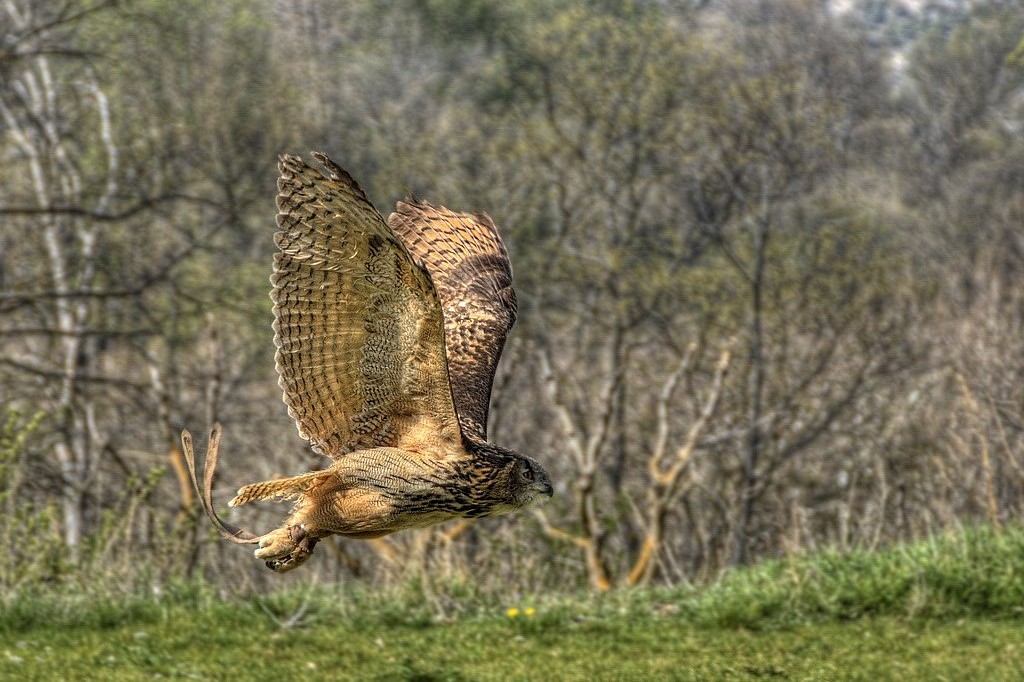
Dangerous flying creatures from past times
Do the birds that we just talked about seem dangerous to you? If so, this means that the stories about the flying creatures that disappeared have not yet reached your ears.
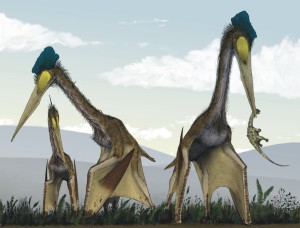
I didn’t choose the word “creatures” by chance. Murderous flyers from the past with which we no longer have the pleasure (or displeasure) to be contemporaries were not only birds, but also reptiles. Yes, flying reptiles! Quetzalcoatlus northropi, the reptile whose outstretched wings measured 12 meters, remain the largest flying animals that ever existed.
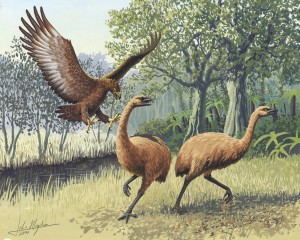
Even birds of prey in the past were much bigger than today. Haast’s eagle (Harpagornis moorei) was an eagle much bigger and deadlier than any of those that now exist. Argentavis magneficens, an ancestor of vultures, had a wingspan of 7 meters and could eat surprisingly big animals. Pelagornis sandersi was even bigger, but was satisfied with fish; so when the other creatures saw it, they had no reason to fear.
The flying creatures of the past, especially those dealing with hunting, were more fierce than those we have nowadays. In spite of the time that has passed, I can’t say that the birds from our days appetite for meat has changed drastically. Would any of them want to become a vegetarian?!
A well-illustrated presentation of the most amazing pterosaurs, and not only (the surprises are at the end!)
A spectacular and documented presentation of all the extinct giant birds, with pictures of each type of them
A spectacular comparison with similarities and differences drawn between exceptional animals and common variants
References
| ↑1, ↑12 | ”Vultures: Their Evolution, Ecology and Conservation” by Michael O’Neal Campbell, book published by CRC Press in 2015 |
|---|---|
| ↑2 | ”Vultures: Their Evolution, Ecology and Conservation” by Michael O’Neal Campbell, book published by CRC Press in 2015 |
| ↑3 | ”Globally Threatened Birds in Europe” – book published by European Council in 1996 |
| ↑4 | ”Tibet” by Michael Buckley, book published by Bradt Travel Guides in 2012 |
| ↑5, ↑11 | ”Raptors of the World” by James Ferguson-Lees and David A. Christie, book published by Princeton University Press in 2006 |
| ↑6, ↑7 | ”Lammergeier (Gypaetus barbatus)” in Wildscreen Arkive |
| ↑8 | ”Flight of Fancy” by Stephen Marche, article published by The New Republic in June 13, 2008 |
| ↑9 | ”New World vulture” in Wikipedia |
| ↑10 | ”Whole-genome analyses resolve early branches in the tree of life of modern birds” – study conducted by Erich D. Jarvis, Siavash Mirarab, Andre J. Aberer, Bo Li, Peter Houde, Cai Li, Simon Y.W. Ho, Brant C. Faircloth, Benoit Nabholz, Jason T. Howard, Alexander Suh, Claudia C. Weber, Rute R. da Fonseca, Jianwen Li, Fang Zhang, Hui Li, Long Zhou, Nitish Narula, Liang Liu, Ganesh Ganapathy, Bastien Boussau, Md. Shamsuzzoha Bayzid, Volodymyr Zavidovych, Sankar Subramanian, Toni Gabaldón, Salvador Capella-Gutiérrez, Jaime Huerta-Cepas, Bhanu Rekepalli, Kasper Munch, Mikkel Schierup, Bent Lindow, Wesley C. Warren, David Ray, Richard E. Green, Michael W. Bruford, Xiangjiang Zhan, Andrew Dixon, Shengbin Li, Ning Li, Yinhua Huang, Elizabeth P. Derryberry, Mads Frost Bertelsen, Frederick H. Sheldon, Robb T. Brumfield, Claudio V. Mello, Peter V. Lovell, Morgan Wirthlin, Maria Paula Cruz Schneider, Francisco Prosdocimi, José Alfredo Samaniego, Amhed Missael Vargas Velazquez, Alonzo Alfaro-Núñez, Paula F. Campos, Bent Petersen, Thomas Sicheritz-Ponten, An Pas, Tom Bailey, Paul Scofield, Michael Bunce, David M. Lambert, Qi Zhou, Polina Perelman, Amy C. Driskell, Beth Shapiro, Zijun Xiong, Yongli Zeng, Shiping Liu, Zhenyu Li, Binghang Liu, Kui Wu, Jin Xiao, Xiong Yinqi, Qiuemei Zheng, Yong Zhang, Huanming Yang, Jian Wang, Linnea Smeds, Frank E. Rheindt, Michael Braun, Jon Fjeldsa, Ludovic Orlando, F. Keith Barker, Knud Andreas Jønsson, Warren Johnson, Klaus-Peter Koepfli, Stephen O’Brien, David Haussler, Oliver A. Ryder, Carsten Rahbek, Eske Willerslev, Gary R. Graves, Travis C. Glenn, John McCormack, Dave Burt, Hans Ellegren, Per Alström, Scott V. Edwards, Alexandros Stamatakis, David P. Mindell, Joel Cracraft, Edward L. Braun, Tandy Warnow, Wang Jun, M. Thomas P. Gilbert and Guojie Zhang, published in Science on December 12, 2014 |
| ↑13, ↑21 | ”Eagles” by Rebecca L. Grambo, book published by Voyageur Press in 2003 |
| ↑14 | ”Eagles (Endangered!)” by Karen Haywood, book published by Benchmark Books in 2008 |
| ↑15 | ”Panama” by Sarah Woods, book published by Bradt Travel Guides in 2009 |
| ↑16, ↑18 | ”Steller’s sea eagle (Haliaeetus pelagicus)” in Wildscreen Arkive |
| ↑17 | ”Raptors of the World” by James Ferguson-Lees şi David A. Christie, book published by Princeton University Press in 2006 |
| ↑19, ↑20 | ”White-tailed eagle (Haliaeetus albicilla)” in Wildscreen Arkive |
| ↑22 | ”Southern African Wildlife” by Mike Unwin, book published by Bradt Travel Guides in 2011 |
| ↑23 | ”Field Guide to the Birds of Ghana” by Nik Borrow and Ron Demey, book published by Christopher Helm Publishing Company in 2010 |
| ↑24 | ”Golden Eagle” în All About Birds |
| ↑25 | ”Do Eagles Really Snatch Babies?” by Forrest Wickman, article published in Slate on December 19, 2012 |
| ↑26 | ”Aquila chrysaetos” in Animal Diversity Web |
| ↑27, ↑28 | ”Gyrfalcon” in The Peregrine Fund |
| ↑29 | ”Falling with the Falcon” by Tom Harpole, article published in Air & Space Magazine in March, 2005 |
| ↑30 | ”Animal Records” by Mark Carwardine, book published by Sterling in 2008 |
| ↑31 | ”Owls of the World” by Claus König), Friedhelm Weick and Jan-Hendrik Becking, book publlished by Yale University Press in 2009 |
| ↑32 | ”Birds of East Asia: China, Taiwan, Korea, Japan, and Russia” by Mark Brazil, book published by Princeton University Press in 2009 |
| ↑33 | ”Eurasian eagle-owl (Bubo bubo)” in Wildscreen Arkive |
Did you like it? Now it’s your turn. You’ll make us very happy if you share this article with your friends:
And don’t forget to let us know what you think – we are really interested in your thoughts on this!



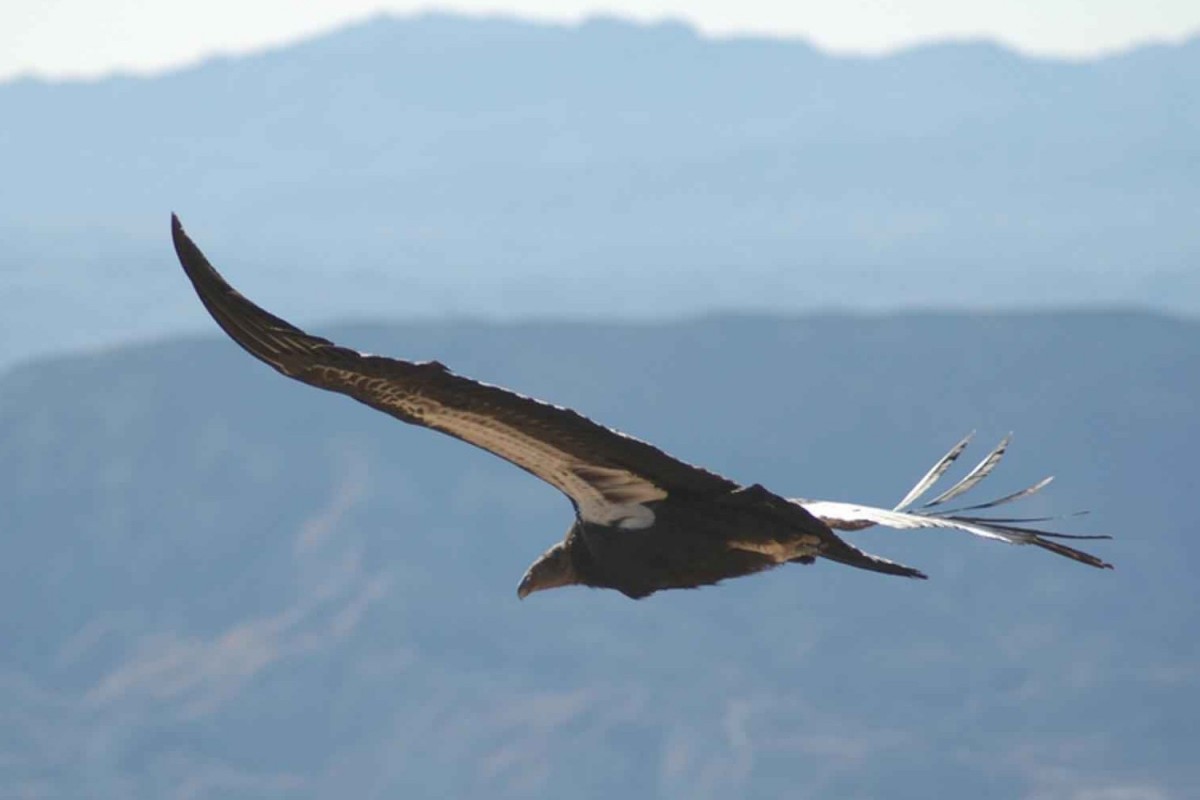
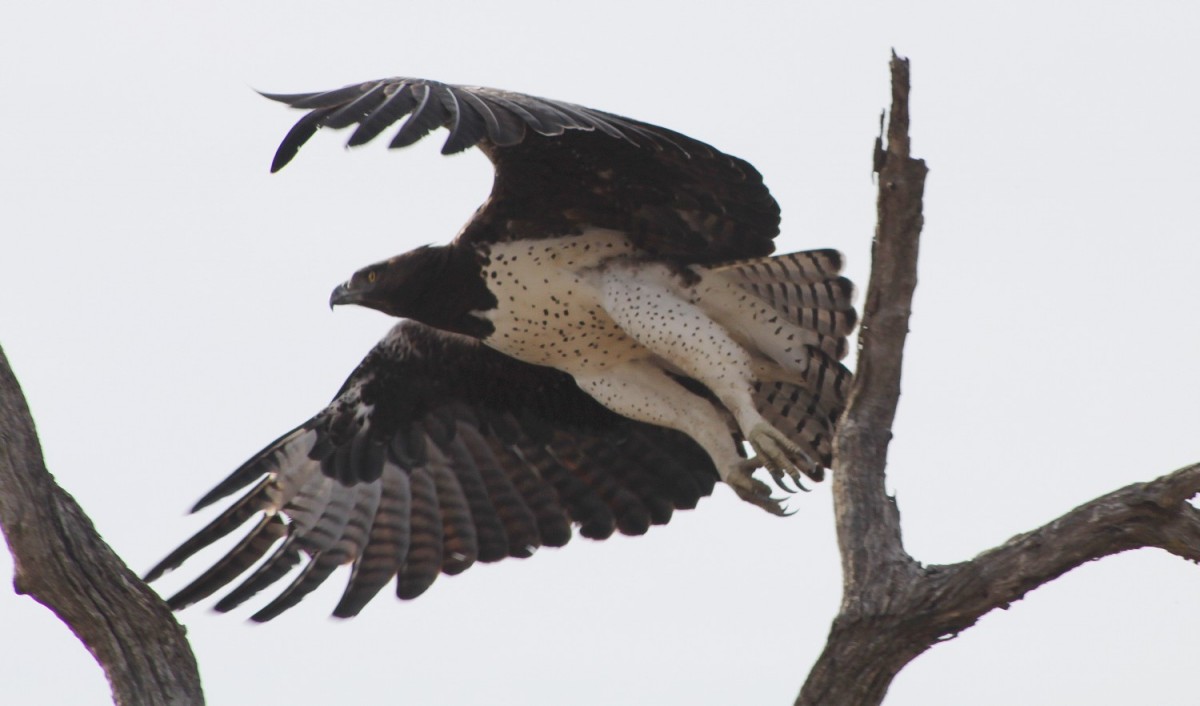
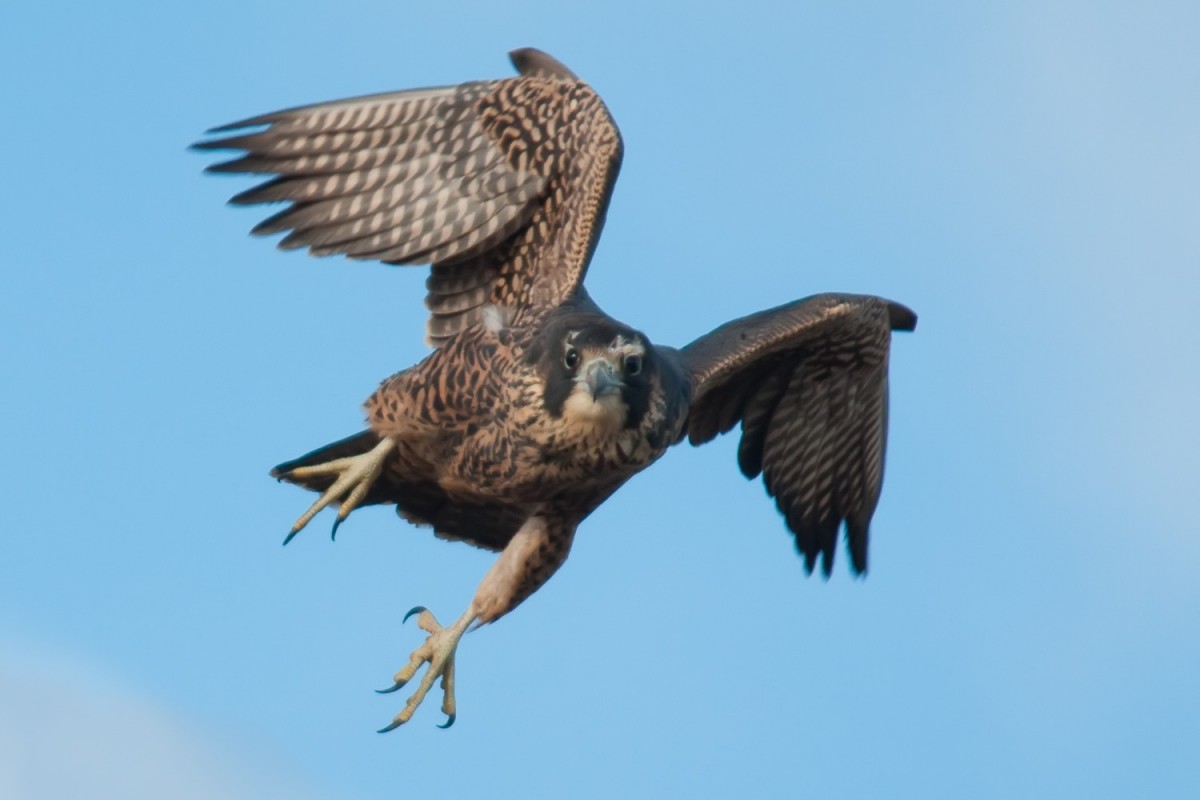
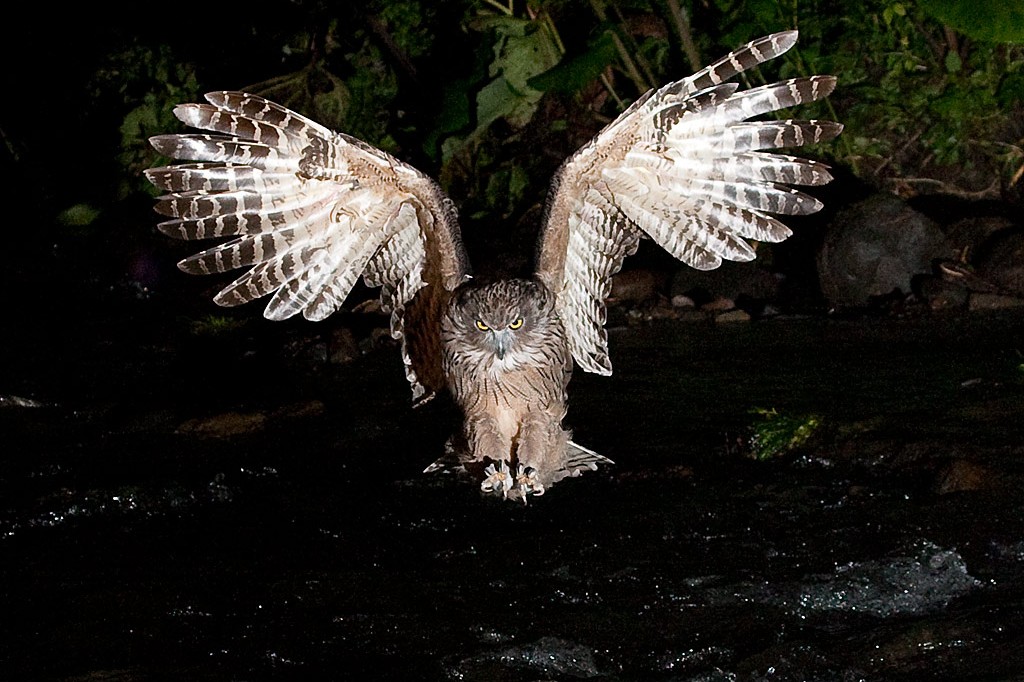

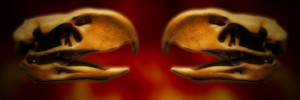


lots of misinformation here concerning flight speeds
All the details are based on published sources.